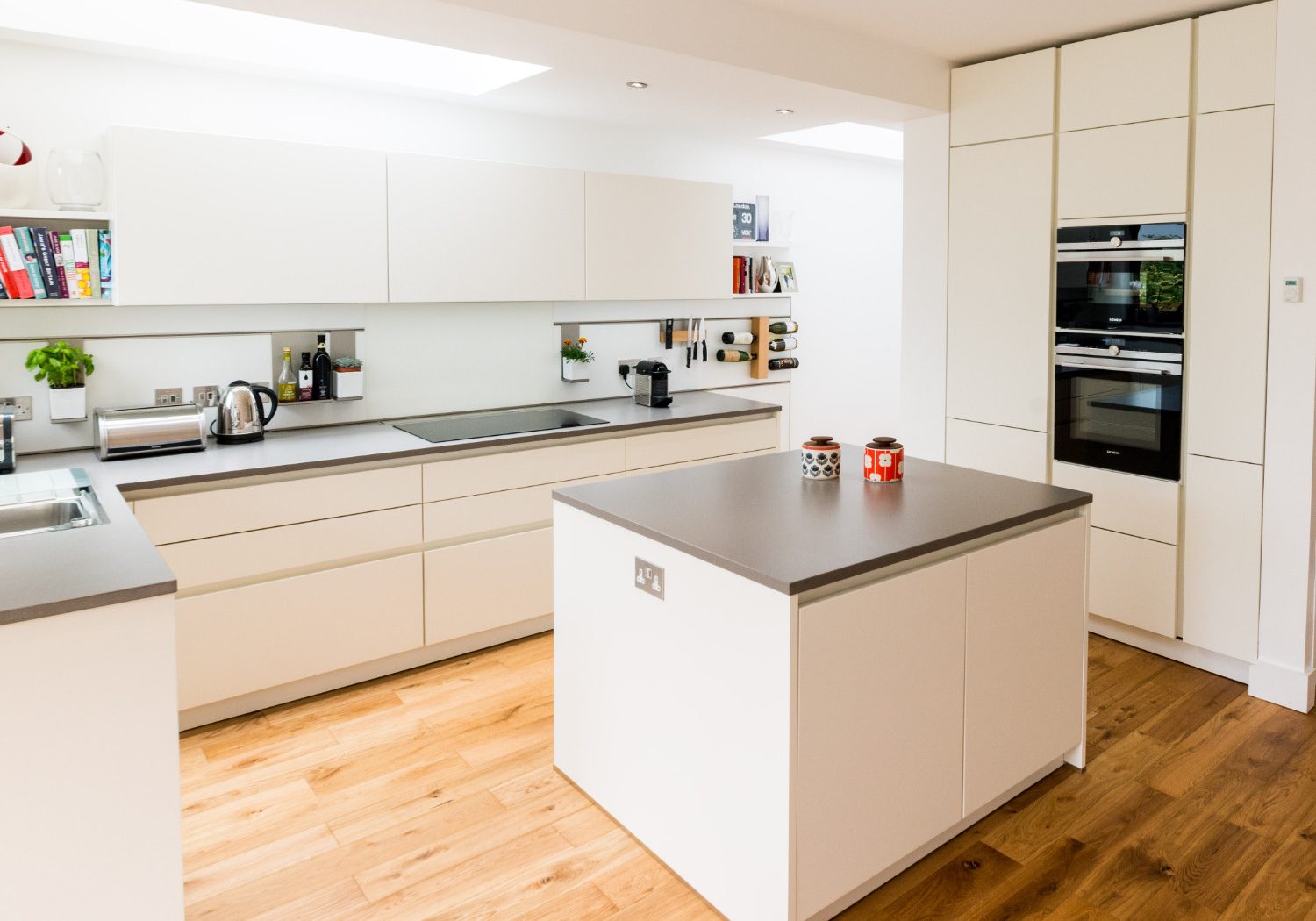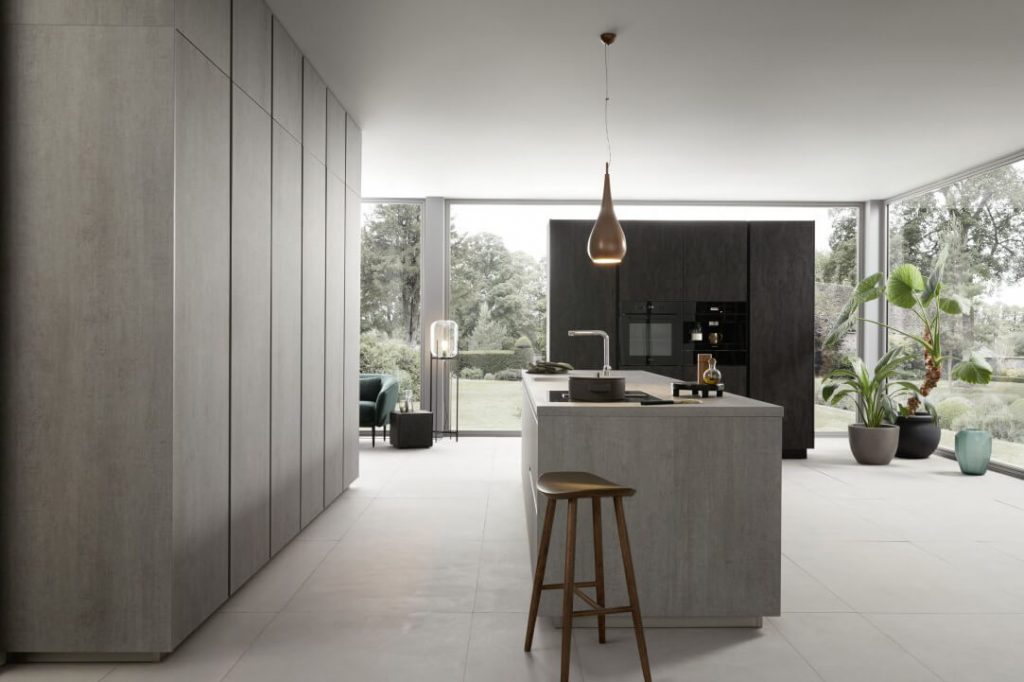Simple, contemporary and also practical. The handleless kitchen has become a central feature of many homes. If you are considering installing a new handleless kitchen it may be helpful to take some time to consider the advantages and disadvantages of this design icon.
When you start looking at the options for a new kitchen, perhaps looking in showrooms, online or in magazines, you will see many examples of handleless kitchens. With their simple, clean lines they fit perfectly with contemporary home interiors. Although the handleless kitchen has become popular in recent years, its roots go back to the 1960’s. Originally invented by SieMatic almost every kitchen manufacturer now has handleless kitchens or kitchens with slim handle profiles in their range.
Handleless kitchens vary in style and price. The simplest and least expensive options have pull to open doors. Manual push to open systems are also available – gently push the door or drawer and it opens. Motor assisted mechanisms are the most expensive option.
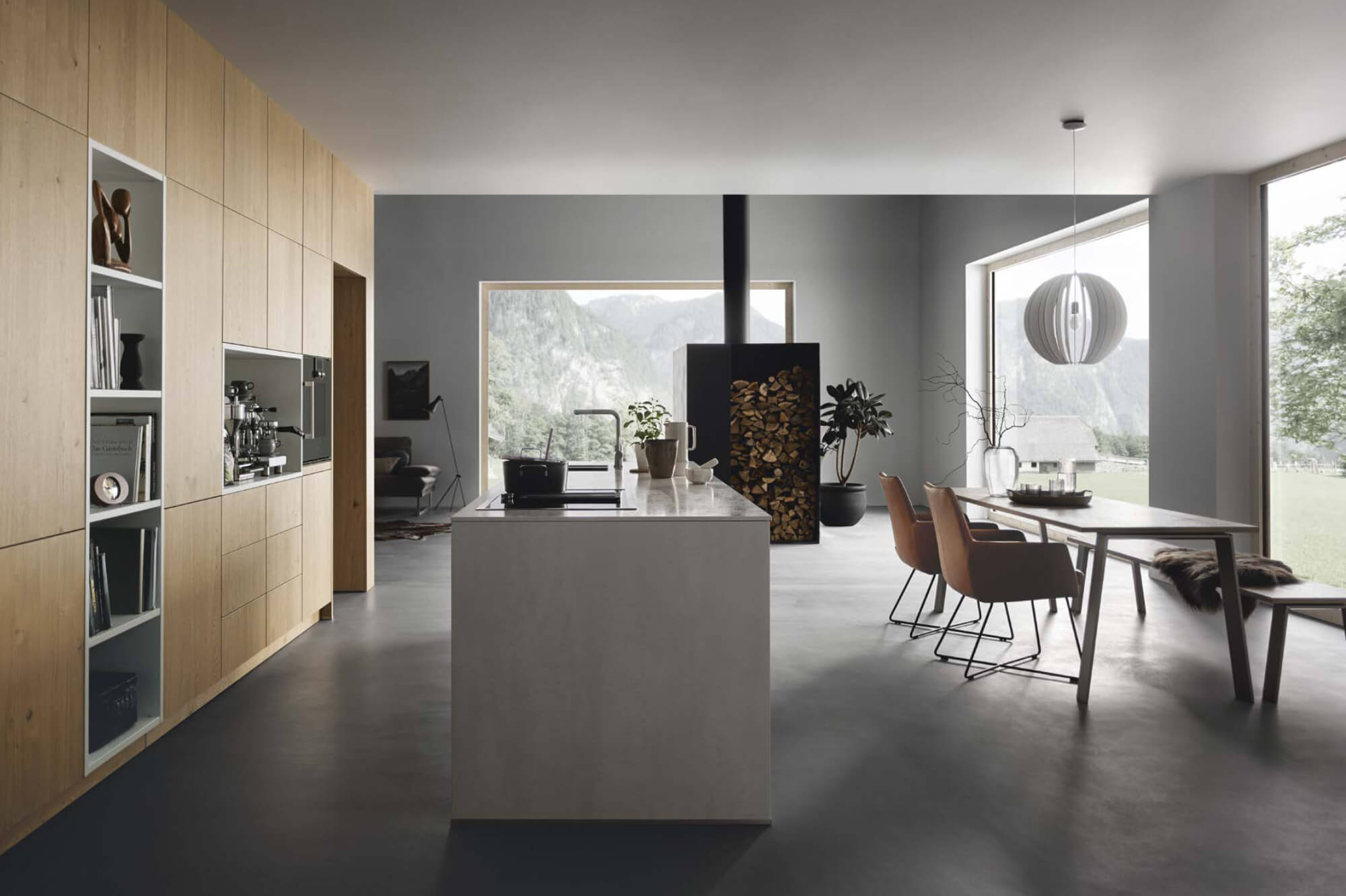
Handleless kitchens: colours and materials
When choosing a handleless kitchen, you can usually choose between the same range of kitchen fronts, carcasses and colour combinations as any other style of kitchen. There are different materials, coatings and surface structures available.
Most people opt for matt fronts in light or white tones although darker colours, including blacks, are becoming more popular. You can add accent colour with coloured lacquers or wood. Reproduction wood from a quality kitchen manufacturer will be very realistic. Wood veneer fronts are expensive but have a warmth that is hard to match.
Other kitchen furniture styles have also been re-interpreted as handleless designs. For example country or farmhouse kitchens do not necessarily have to be equipped with rustic handles. The modern version looks great even without handles.
Handleless kitchens: opening systems
In addition to different styles and colors, there is also a selection of operating methods to choose from . The options available include handle strips, a range of recessed grips, mechanical tip-on (or push-to-open) technology and electronic servo technology.
Recessed grip
Recessed grips are milled into the body of the door and clad with a continuous aluminum strip. The aluminium strip is often in stainless steel colour but it is possible to colour it to match the door fronts. If the recess is horizontal it can also be equipped with LED lighting. Kitchen designers may refer to the recessed grip as a ‘real’ or ‘true’ handleless kitchen.
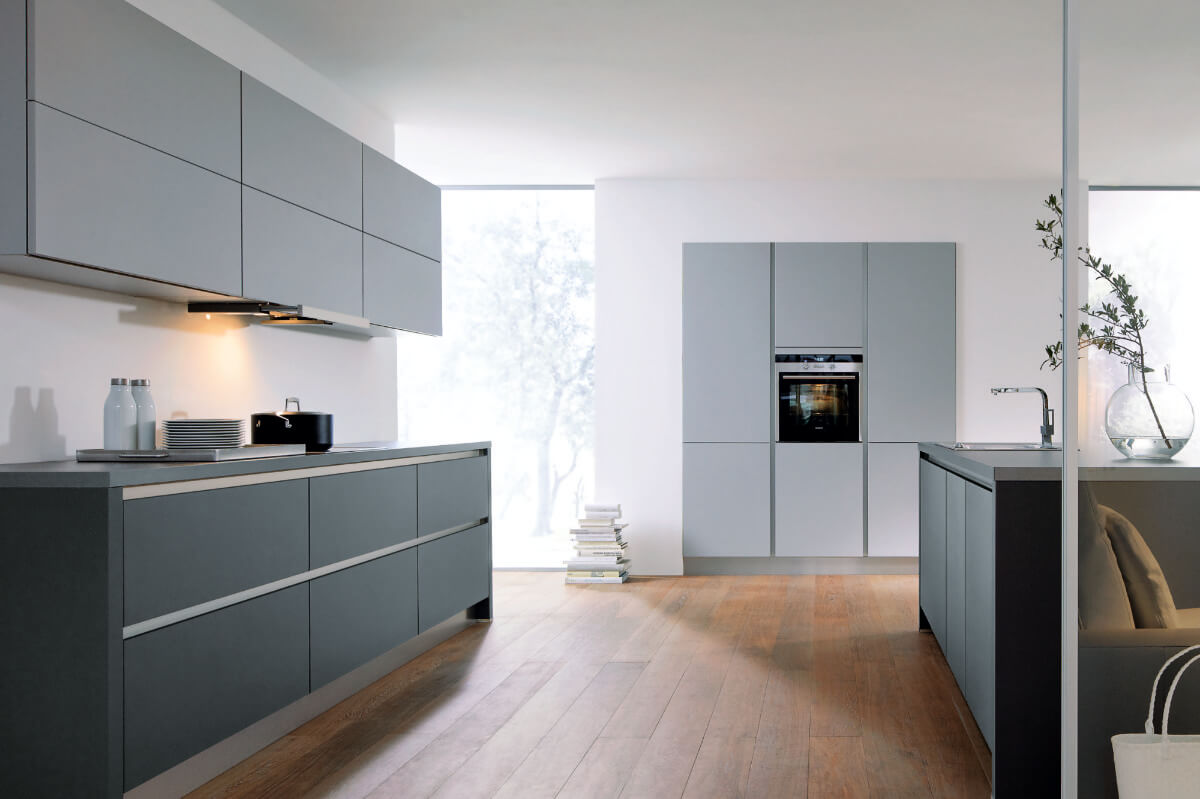
Handle strips
Handle strips make the kitchen look like a handleless kitchen, but strictly speaking, these are handles. The strips, which are usually made of aluminum or stainless steel, can be attached in several different ways. The most frequently seen options are flush mounting and recessed.
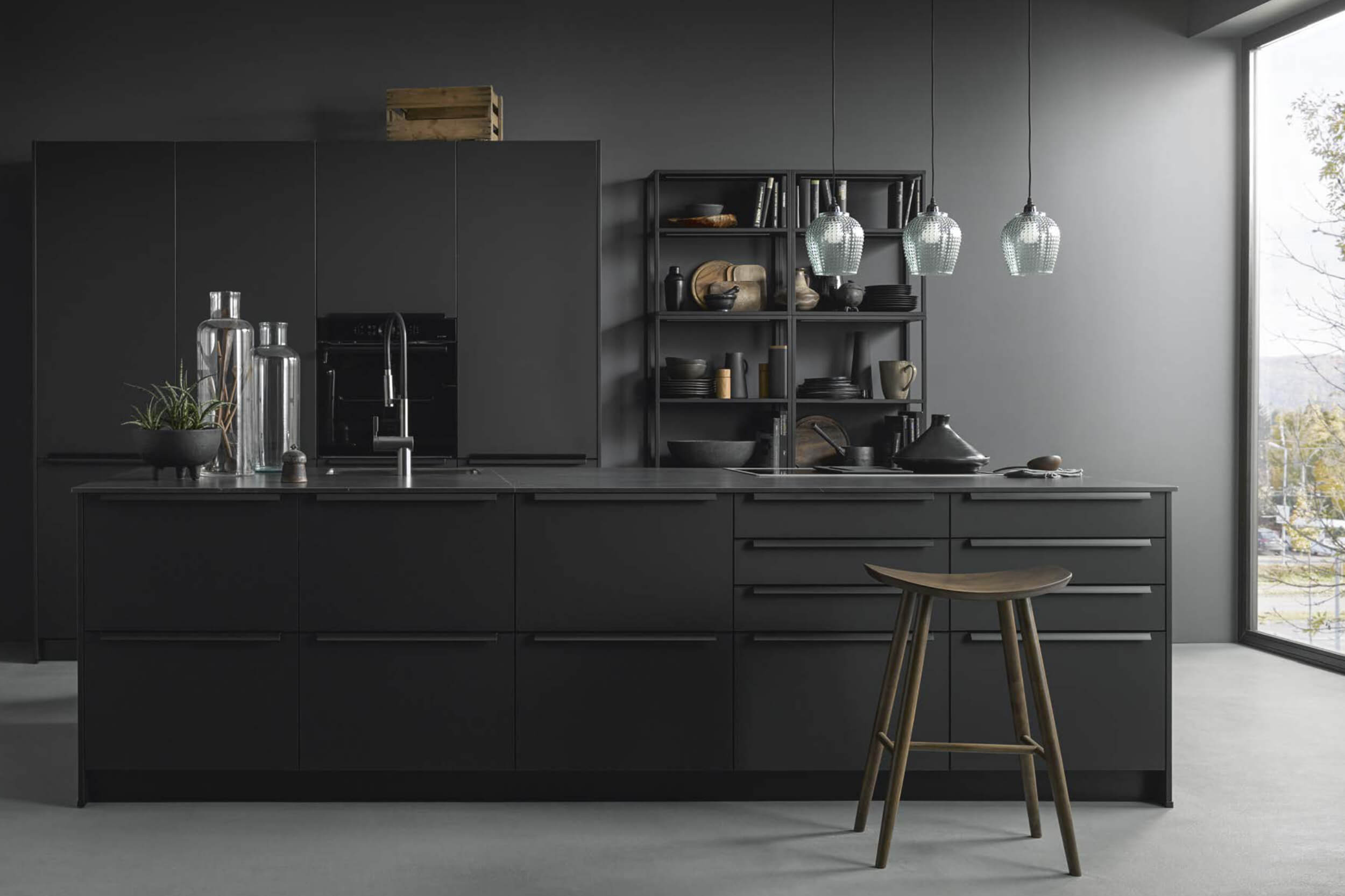
Flush mounting
The handle shell is mounted flush on the upper edge of the base unit or the lower edge of the wall unit. A part protrudes from the front of the body so you can reach under to open the drawer or the door. This variant is also called a handle bar.
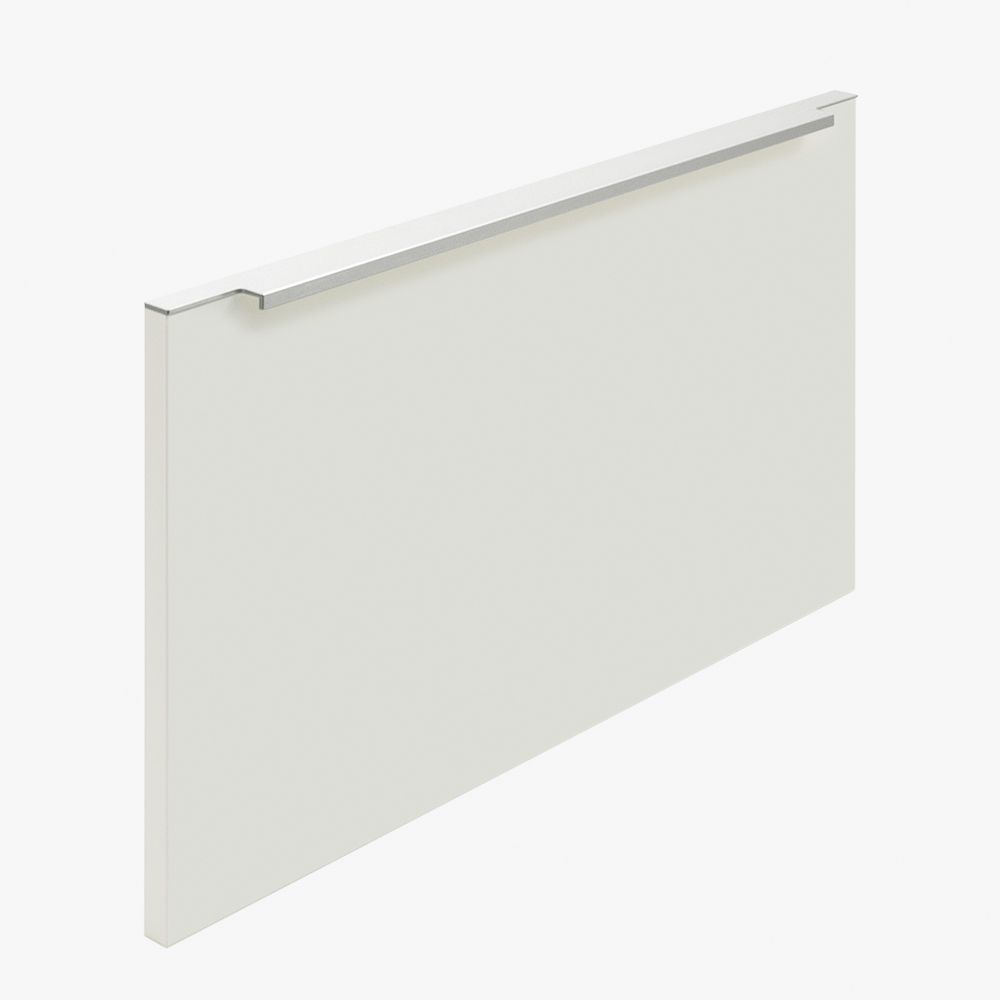
Recessed mounting
A recessed strip is often referred to as a shell grip. A recess is first milled into the door, and the grip is then attached. This handle is called a shell grip because its structure is reminiscent of a half-open shell.
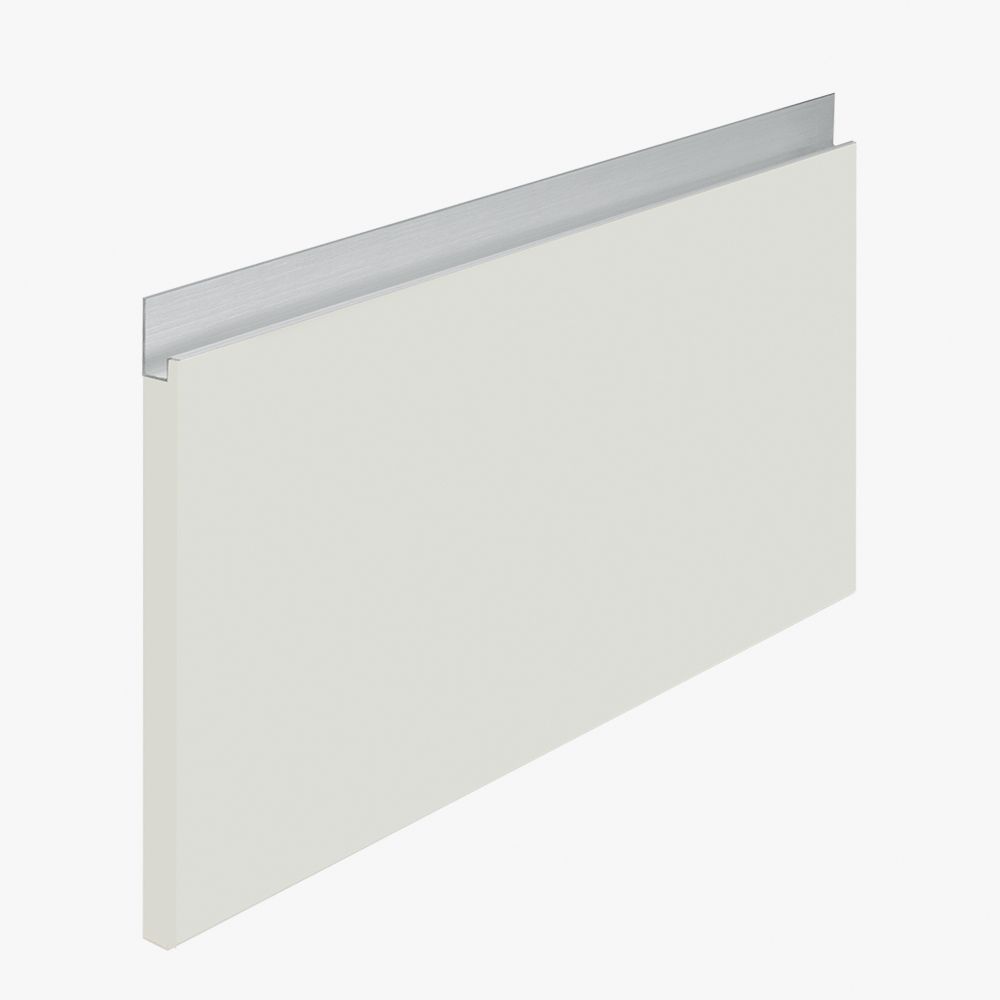
Push to open
With the mechanical tip-on or push-to-open system, there are no visible opening elements on the doors. The mechanism works by gently pushing on the door or drawer to open it. Electronic servo technology looks the same from the outside. A sensor on the front detects light touches and pulls out the drawer or door completely with the help of a motor. This system is particularly suitable for wall cupboards with upward opening doors, as you don't have to push the flap doors up to completely open them.
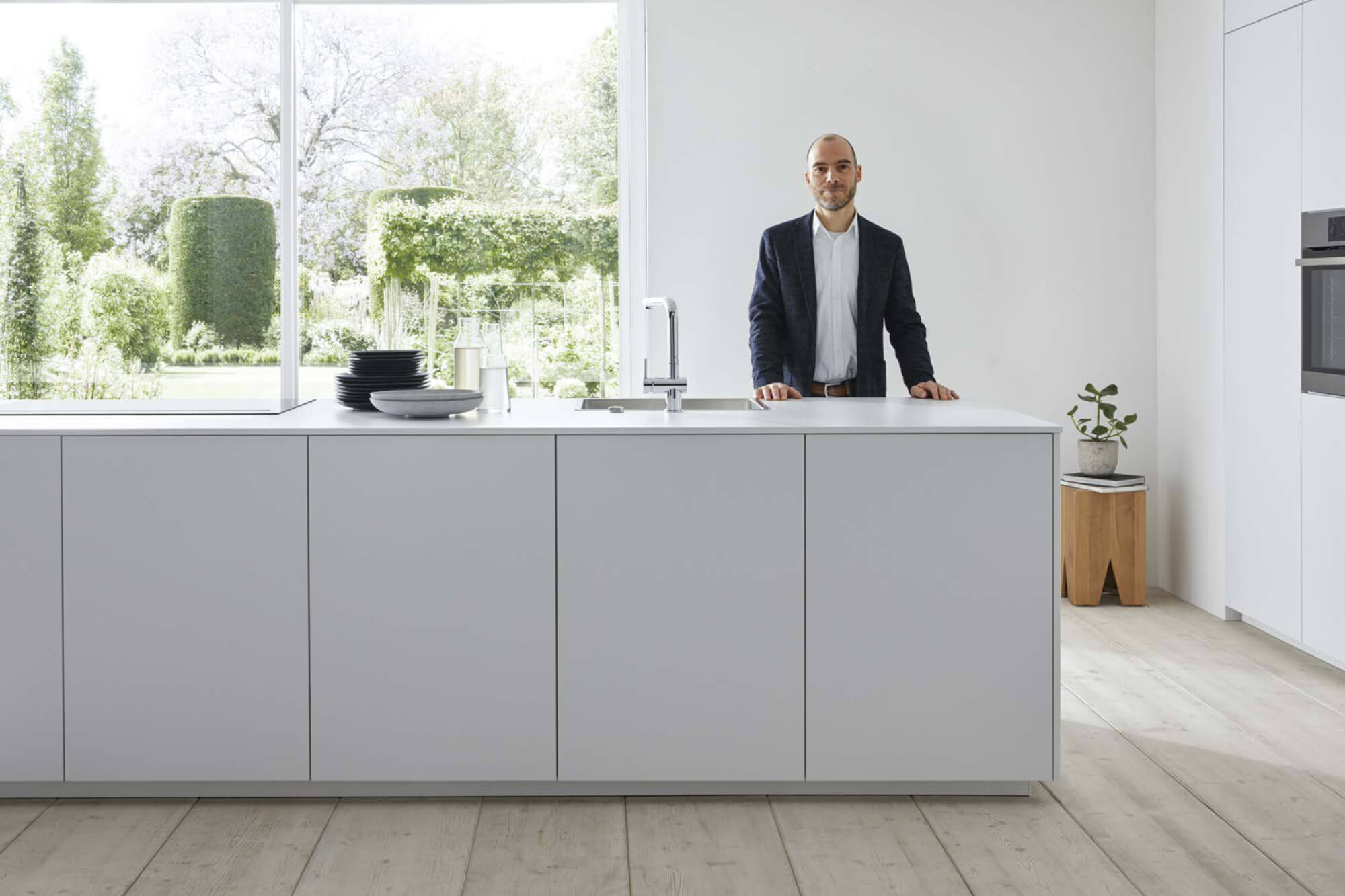
Handleless kitchens: advantages and disadvantages
Advantages
The style of a handleless kitchen will be an important factor in your choice. Smooth fronts in a wide variety of colors and materials not only offer great freedom in design, they also make the kitchen more homely and a real extension of the living space. In addition to design and harmony, ease of cleaning and practical handling are also advantages of a handleless kitchen.
A handleless kitchen with electronic servo assisted doors can be very easy to use particularly if you find opening heavy doors and drawers difficult.
A handleless kitchen is also practical in small kitchens as you will not get caught on protruding handles while cooking.
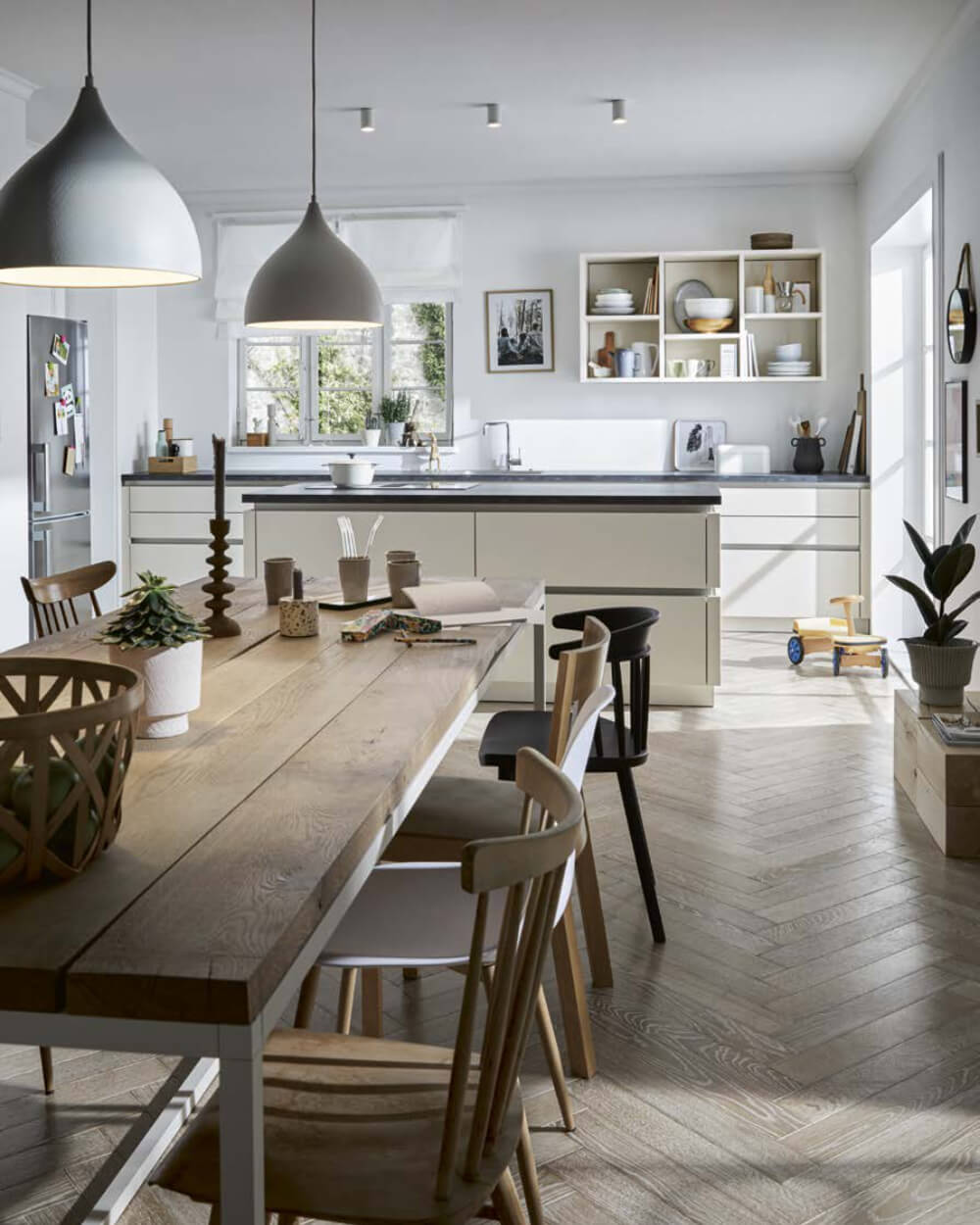
Disdvantages
Although there are many benefits to having a handleless kitchen there are also some disadvantages.
Handleless kitchens are easy to clean, but they also get dirty through direct contact. Fingerprints and dirt are particularly noticeable on darker colours although anti-fingerprint systems can help compensate for this.
Push to open systems can require periodic adjustment to ensure they operate effectively. Systems with electronic assistance make it very easy to open cupboard and this will be a consideration if small children can access the kitchen doors. Servo assisted opening systems are also more expensive than manual options.
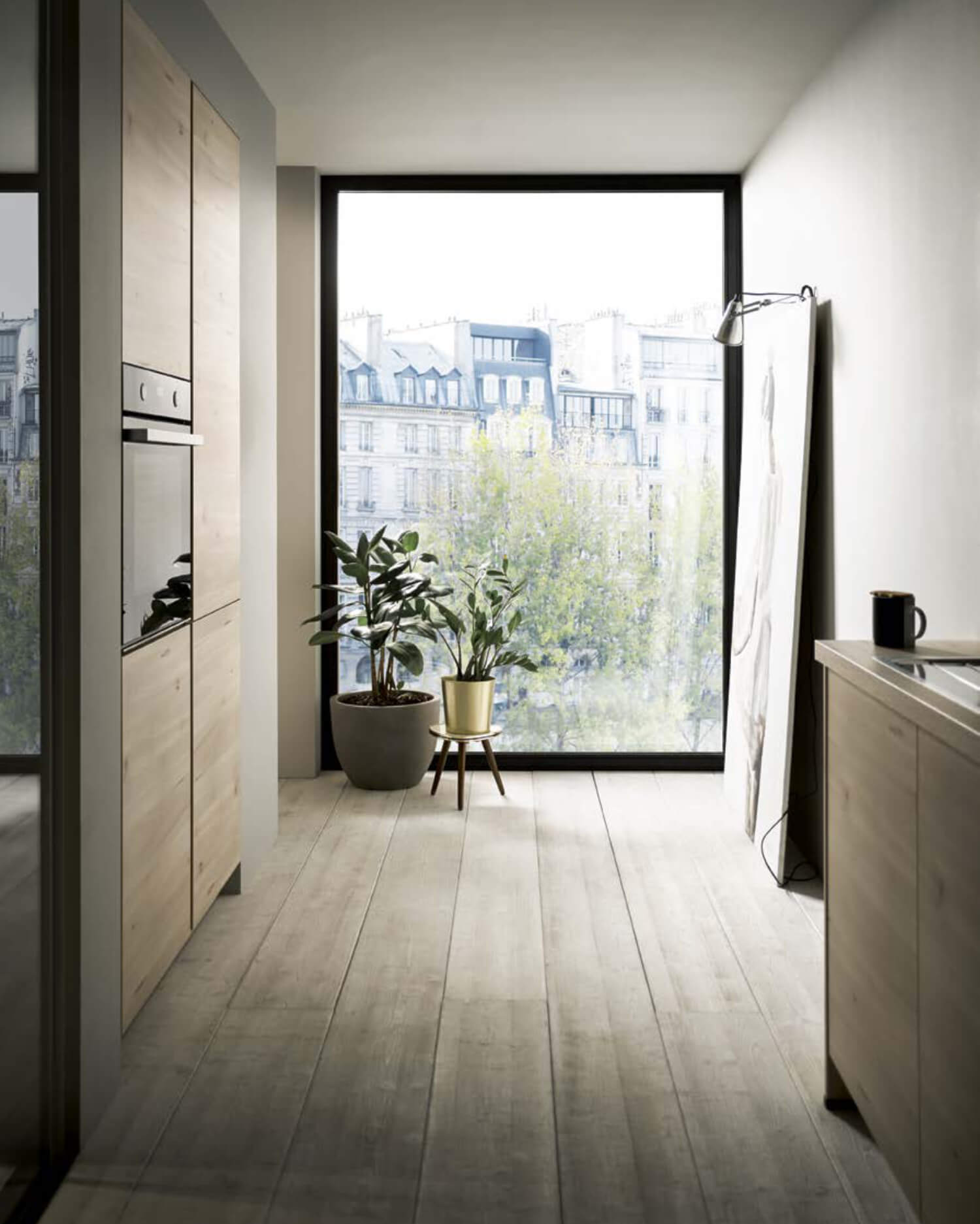
Handleless kitchens: appliances
Choosing appliances for a handleless kitchen is not always straightforward. You may want to choose appliances without handles to maintain the overall appearance of the kitchen or your chosen design may require the appliances to be handle free.
Tall fridges and freezers will normally require vertical recessed grips to allow the doors to be opened from the side. Dishwashers fitted under a worktop will also normally require a recessed grip.
If you want a handleless kitchen without any visible handle elements you will need 'knock to open' appliances for example the Miele Touch2Open range. With these appliances you simply knock on the appliance door and it’s servo mechanism will open the door. Ovens are also available with flush handles, for example the Neff range. With a slight tilting movement backwards, you can reach into the recessed grip and open the oven
Before you decide to buy handleless appliances, you should bear in mind that direct contact can quickly make them look dirty. Even the most beautiful surface appears unsightly when it is covered with fingerprints. You should therefore make sure that the appliances have a coating that is as dirt-repellent as possible.
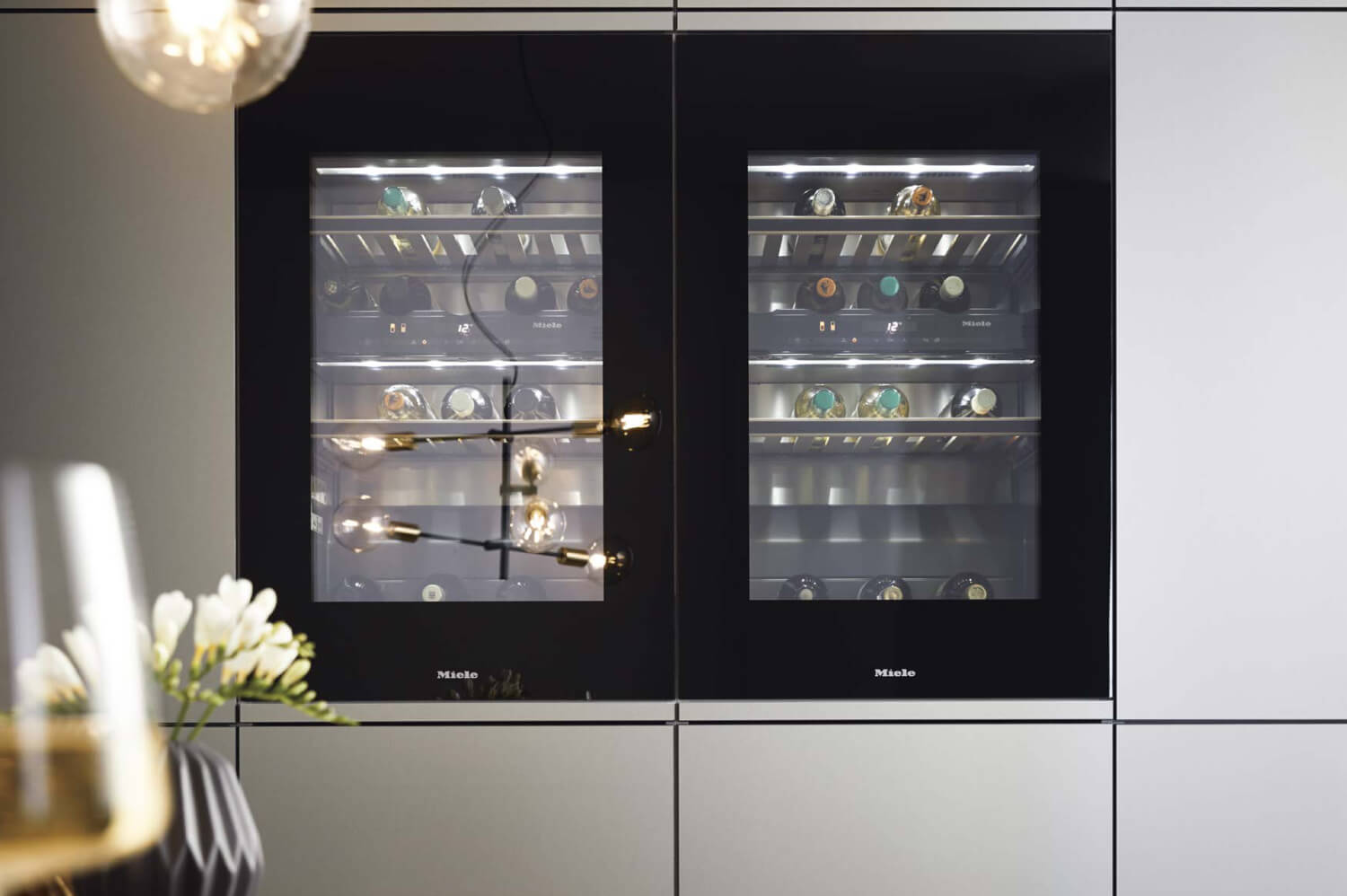
Handleless kitchens: are they expensive?
Handleless kitchens can be more expensive than kitchens with handles because the production processes, such as milling the recesses, are more complex. With a manual opening system the price difference between a handleless kitchen and a design with handles will usually be small.
We find that the much of the additional cost in a handleless kitchen is made up by the vertical grip recesses required to open fridges and freezers in the tall cupboards. However special systems, such as mechanical or electronic door opening, will add significantly to the cost of a handleless kitchen.
